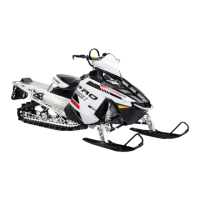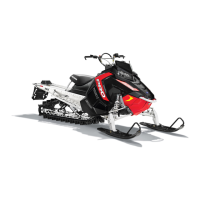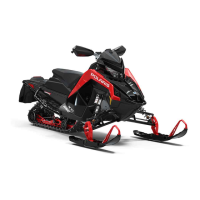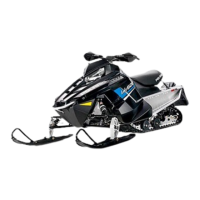1.72
General Information
Gasoline Volatility
Gasoline is given a Reid Vapor Pressure (RVP) number
which reflects its ability to vaporize or mix with air at a
given temperature range. Gasoline vapor pressure is
measured by putting a sample of fuel inside a closed
container and applying a specified amount of heat to the
container for a certain amount of time. RVP will vary from
about 7.0 PSI during the summer to approximately 13.5
PSI during the colder months. Service stations selling a
large volume of fuel will normally have the correct blend to
work well at all times throughout the year in their local
area.
When the weather is very cold, gasoline must be able to
va
porize very quickly in order for an engine to start and
warm up properly. If summer blend fuel is being used in the
winter, little or no vaporization will occur. Droplets will form
causing flooding and very hard starting.
If winter blend fuel is being used during the summer
months, it
may cause vapor lock (boiling fuel) inside the
fuel lines, fuel pump, or carburetor. This will cause warm
engine driveability problems and hard starting when
warm.
Fuel / Oil Premix Ratios
Formula:
• 1 Gallon = 128 Ounces
• 128 / (Desired Ratio) = Ounces of oil for every 1
ga
llon of fuel.
• 128 / 40 (40:1 Ratio) = 3.2 ounces of oil for every 1
ga
llon of fuel.
Always mix ratio in 5 gallon increments.
NOTE: A 40:1 premix should always be used during
engine
break-in or after rebuilding the engine.
Fuel Recommendations
For maximum performance, Polaris recommends the use
of 91 octane or higher non-oxygenated fuel. Although
lower octane and/or oxygenated fuel is usable, some
engine performance will be lost and fuel economy will
decrease.
Do not use lower than 87 octane fuel. Do not use
oxyg
enated fuel containing more than 10% ethanol. Never
use E85 fuel in your snowmobile.
NOTE: Operating with an obstructed fuel system will
re
sult in serious engine damage. Perform
maintenance as recommended.
Prolonged exposure to petroleum based products may
dam
age paint. Always protect painted surfaces when
handling fuel.
Fuel System Deicers
If you use non-ethanol fuel (sometimes labeled “non-
oxyg
enated”), Polaris recommends the regular use of a
isopropyl-based fuel system deicer. Add one to two
ounces per gallon (8-16 ml per liter) of gasoline to prevent
damage resulting from fuel system icing. Never use
deicers or additives containing methanol. Polaris
recommends the use of Carbon Clean Plus.
If you use fuel with up to 10% etha
nol (sometimes labeled
“oxygenated”) do not add deicers or additives that contain
any form of alcohol.
MAXIMUM REID VAPOR AMBIENT AIR TEMP
CLASS PRESSURE LOW HIGH
A 7.0 psi (0.5 bar)
60
°F (16°C)
110
°F+
(43
°C+)
B 9.0 psi (0.6 bar)
50
°F (10°C)
110
°F
(43
°C)
C 10.5psi (0.7 bar)
40
°F
(4
°C)
97
°F (36°C)
D 12.0psi (0.8 bar)
30
°F
(-1
°C)
85
°F (29°C)
E 13.5psi (0.9 bar)
20
°F
(-7
°C)
69
°F (21°C)
Add 2.45
°F for each 1000 ft (305m) above sea level
FUEL (GALLONS) 40:1 RATIO (OUNCES OF OIL)
5 16

